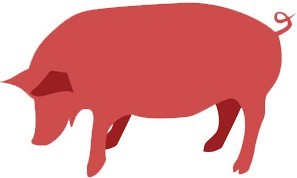As the leader ascends the climb, https://avonvalehunt.co.uk/ they place a piece of gear every five to twenty feet. Placement depends on the circumstances, difficulty and available options. If you’re climbing on a rope, you’ll either be sport climbing or trad climbing, and the difference is huge.

- I actually agree that the term trad has been historically used in the case of runout climbs that happen to have some bolts.
- The simple fact is that a high quality, climate, and rock appropriate bolt that was placed well should be able to take multiple big falls and last for years without pulling.
- The question of trad vs sport climbing is one that almost defines generations.
- Climbing routes and bouldering problems come in different difficulty levels ranging from easy to very hard.
- Mountain project provides an api which provides data in a clean, nested map structure.
- Actually, many climbers around the globe think of traditional climbing as the purest form of rock climbing as it leaves no traces on the rocks.
They can tailor your experience to the area, figure out what you need to hear the most, and will have a range of gear to give you a taster in. It depends on the route, the protection, and many other factors – but in general yes, Trad is more dangerous than Sport climbing. The simple fact is that a high quality, climate, and rock appropriate bolt that was placed well should be able to take multiple big falls and last for years without pulling. The first quickdraw on a sport route is subject to far more wear than all the other quickdraws in the system. One significant difference between alpine ‘draws and other quickdraws is the lack of a rubber retainer on the rope-end ‘biner.
What Is Sport Climbing Vs Trad?
Around 85% of a quickdraw’s weight comes from its two carabiners. The ratings were converted to a numerical rating based on the chart provided above. For instance, 5.6 would be 6.0, 5.11d was given 11.8, V5 is now 12.0, etc.
Climbing Partners
When at the top of a climb, trad climbers sometimes have to build an anchor using their trad protection, relying on whatever natural spots are available for placing protection. In order for a trad route to be climbed, a crack must be present on the rock. Sport climbers rely upon these bolts to clip their quickdraws into for protection. This gives the lead climber the ability to move upward without the hassle of carrying and placing traditional protection devices. When looking at the available routes, or access to trad vs sport climbing, trad wins hands down for most of us.
Sport Vs Trad Analogy
Prior to the 1980s, trad climbing was essentially the only kind of technical free climbing. Sport climbing routes usually have bolted anchors and hardware. This allows practitioners to lower or rappel easily without leaving behind their gear or webbing.
What’s The Difference Between Sport Climbing And Traditional Climbing?
While ascending, the last climber retrieves the safety gears of the leader which restore the rocks to their original state. At the top, trad climbers sometimes have to assemble an anchor using whatever spots available. Still, a couple of courses do prepare bolts for climbers to use as an anchor. There are plenty of reasons why a climber might be better at sport. For one, as we saw earlier, there are more sport routes available. We also saw that, whether it’s related to availability or not, people climb sport more.
Perhaps you’ve been crushing plastic holds for a while now. A standard rack of pro is a mix of active, in the form of camming devices, and passive, in the form of nuts. Trad climbers bring a range of sizes based on what they know about the climb.



